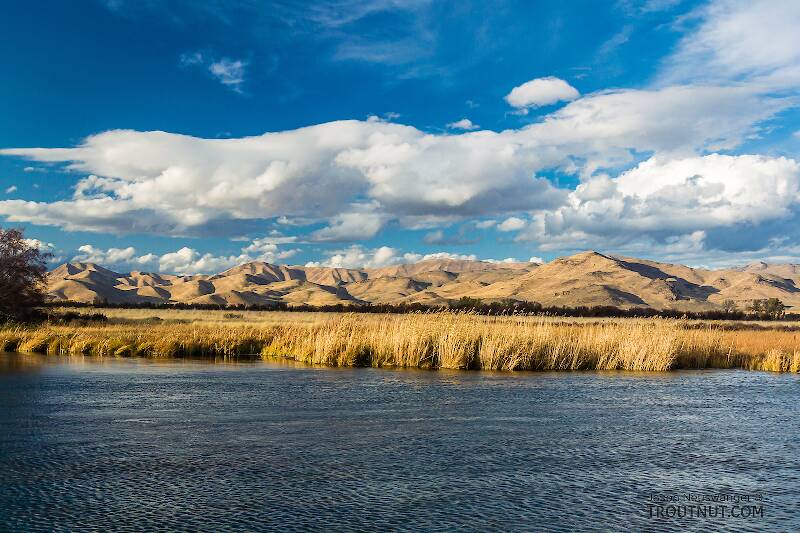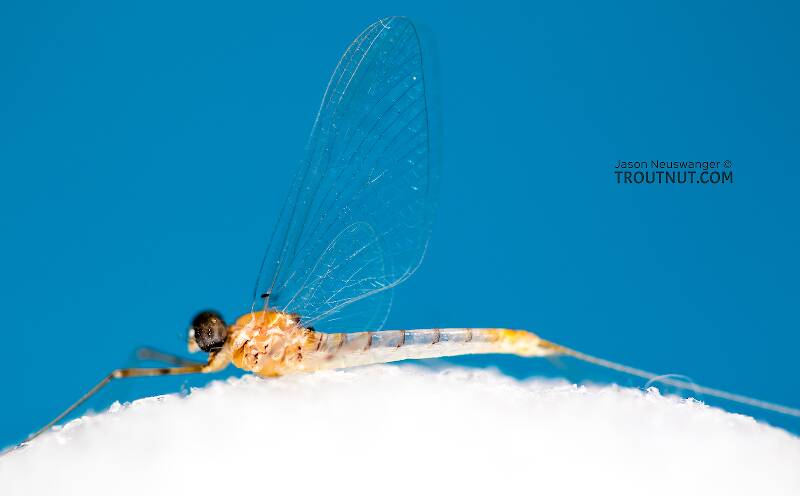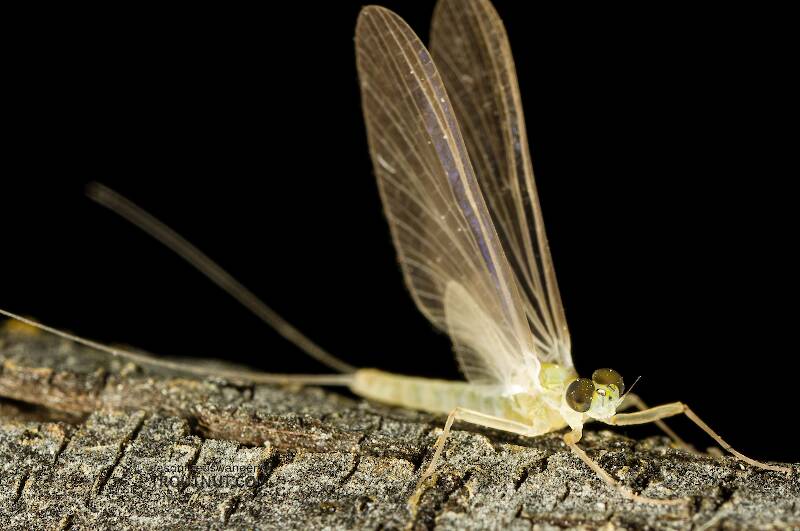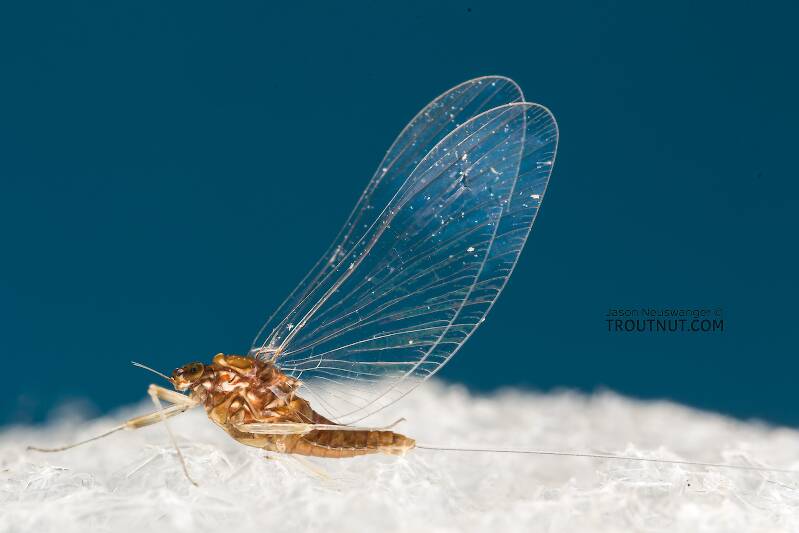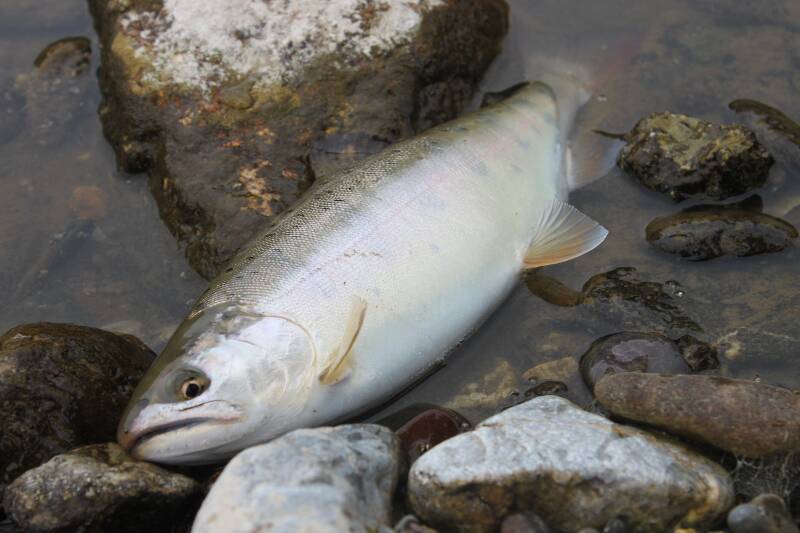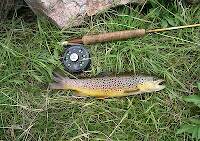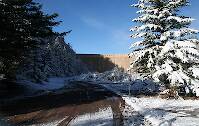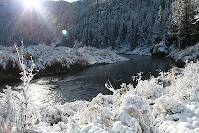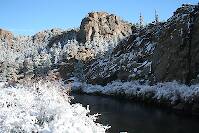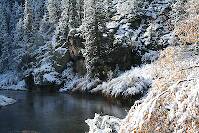
Salmonflies
Pteronarcys californica
The giant Salmonflies of the Western mountains are legendary for their proclivity to elicit consistent dry-fly action and ferocious strikes.
Featured on the forum

This specimen keys pretty easily to Onocosmoecus, and it closely resembles a specimen from Alaska which caddis expert Dave Ruiter recognized as this genus. As with that specimen, the only species in the genus documented in this area is Onocosmoecus unicolor, but Dave suggested for that specimen that there might be multiple not-yet-distinguished species under the unicolor umbrella and it would be best to stick with the genus-level ID. I'm doing the same for this one.

Troutnut is a project started in 2003 by salmonid ecologist Jason "Troutnut" Neuswanger to help anglers and
fly tyers unabashedly embrace the entomological side of the sport. Learn more about Troutnut or
support the project for an enhanced experience here.
This topic is about the Insect Order Ephemeroptera
Mayflies may be the most important insects for trout anglers to understand. They are an ancient order of insects, famous outside the fly-fishing world for their fragile beauty and short adult lifespan, often a single day to mate and die. The mayfly's poignant drama attracts poets and anglers alike, but anglers make the most of it.Mayflies live more than 99% of their lives as nymphs on the river or lake bottom, filling many crucial roles in freshwater ecosystems as they feed and grow. They eventually emerge from the water as winged sub-adults called "subimagos" by scientists and "duns" by anglers. Duns evolved to be good at escaping the water, with a hydrophobic surface and hardy build, but they are clumsy fliers. Within a day or two they molt one last time into "imagos" or "spinners," the mature adults, a transformation captured in this photo series of a dun molting into a spinner. They have longer legs and tails, and sleeker, more lightweight bodies, giving them the airborne speed, agility, and long grasp they need for their midair mating rituals. They are usually darker than the duns and have shinier, more transparent wings. They die within minutes or hours after mating.
Example specimens
U2ill on Apr 2, 2008April 2nd, 2008, 8:12 am EDT
All,
Is it possible to predict a hatch (whether mayfly, caddis, stonefly, etc) based off of water, air, and weather data? So if I know streamflow, water temp, air temp, wind, cloudiness, etc...and I know what insects are on a stream...is that enough data to make a prediction like "There would be a good likelihood of a caddis hatch this afternoon"?
Is it possible to predict a hatch (whether mayfly, caddis, stonefly, etc) based off of water, air, and weather data? So if I know streamflow, water temp, air temp, wind, cloudiness, etc...and I know what insects are on a stream...is that enough data to make a prediction like "There would be a good likelihood of a caddis hatch this afternoon"?
Epeorus on Jun 24, 2014June 24th, 2014, 12:33 pm EDT
Don't know, but many years ago I was fishing the West Branch of the Delaware with a buddy of mine (Bruce) who knew it like the back of his hand. We were waiting for the Invaria/ Rotunda hatch. The Wets Branch sees a fairly wide temperature swing at that time of the year, and as I was grumbling about the lack of hatching Bruce says - "put you thermometer in the water. when you see the temperature reach 55 you'll see the hatch" Sure enough when the water reached 55 the bugs starting hatching.
Don't know if that was a prediction, or just a way to make me shut up and wait. Like to think it was a prediction by an experienced fly fisherman.
Don't know if that was a prediction, or just a way to make me shut up and wait. Like to think it was a prediction by an experienced fly fisherman.
TNEAL on Jun 24, 2014June 24th, 2014, 1:09 pm EDT
water temperature is only one variable. insects have to be ready to hatch. if the water temp hits mid 50's in early March, you won't have Hendricksons because they simply aren't ready. On the other hand, I've fished heavy Hendricksons with water temps as low as 46; Hex hatches with water temps in the mid 50's. Don't bank on hatches simply by water temps.
Quick Reply
Related Discussions
Topic
Replies
Last Reply
6
Dec 19, 2006
by DeRidder
by DeRidder
1
May 23, 2014
by Entoman
by Entoman
Re: National Weather Service in La Crosse captured the Hex hatch on radar
In General Discussion by Wiflyfisher
In General Discussion by Wiflyfisher
3
Jul 14, 2008
by Wiflyfisher
by Wiflyfisher
14
Aug 16, 2015
by Catskilljon
by Catskilljon

